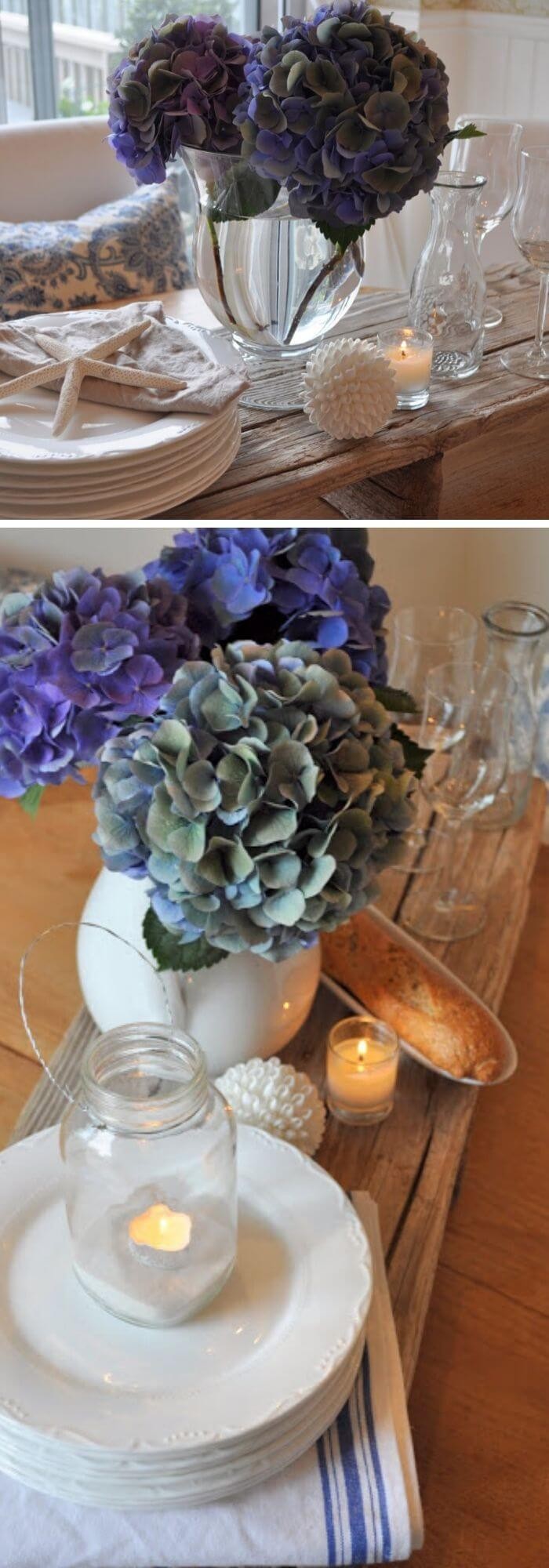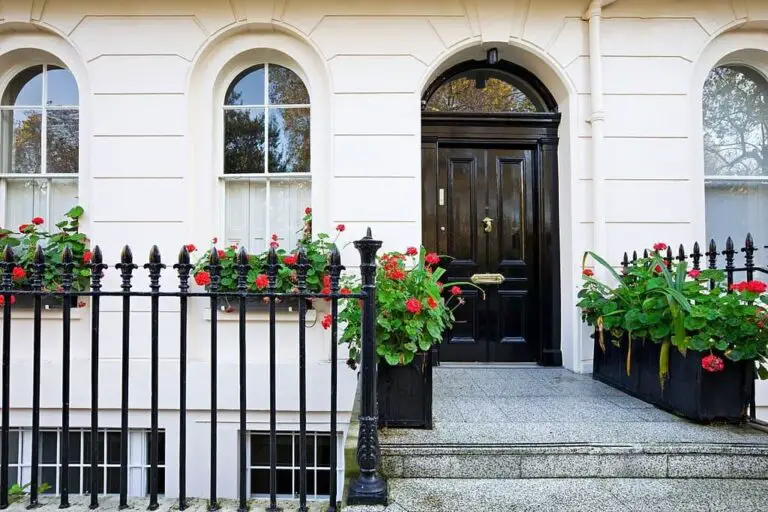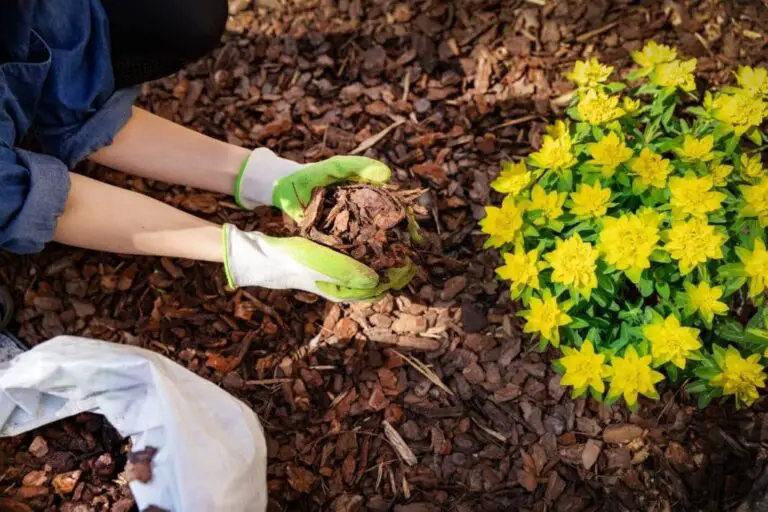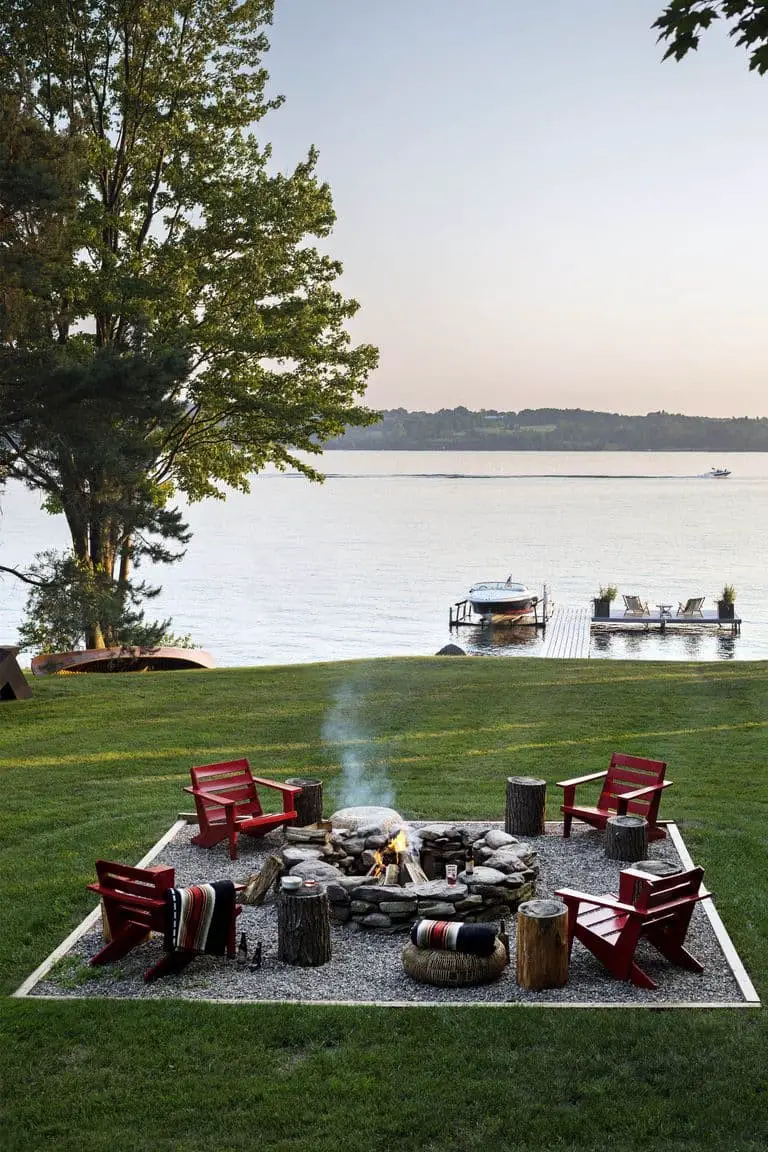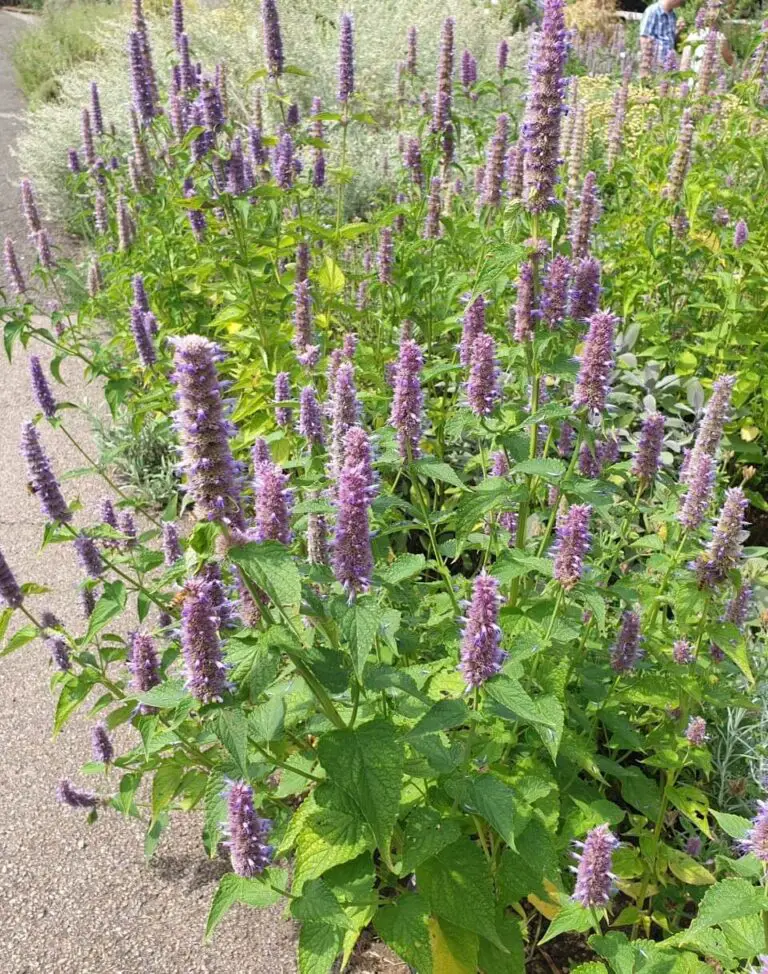35 Hedge Plants With Flowers: Garden Oasis
Flowering hedges bring a burst of color and vitality to any outdoor setting, making them an excellent choice for homeowners seeking low-maintenance solutions or wanting to add a touch of elegance to their property. These stunning plants not only transform dull gardens into vibrant oases but also provide a natural windbreak while brightening the surrounding area with their radiant blooms.
With their evergreen shrubs, flowering shrubs, and climbing vines, there’s a wide range of hedge plants that can give your garden a unique identity. By incorporating these flowering hedges into your landscape design, you can effortlessly enhance any outdoor living space and create a beautiful haven for relaxation and entertainment.
Top 35 Hedge Plants With Flowers
Hedge Germander
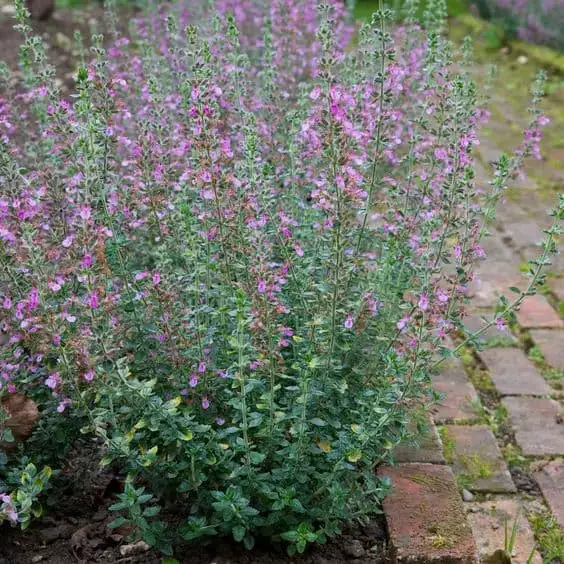
In arid environments, the hedge Germander proves to be an ideal choice. This hardy and adaptable plant flourishes in USDA zones 7 through 9, making it a great option for those living in these regions. Characterized by its vibrant purple blooms, the Germander also boasts year-round greenery, requiring minimal upkeep and attention. Regular pruning can even promote healthy lateral growth, further enhancing its natural charm.
Camellia
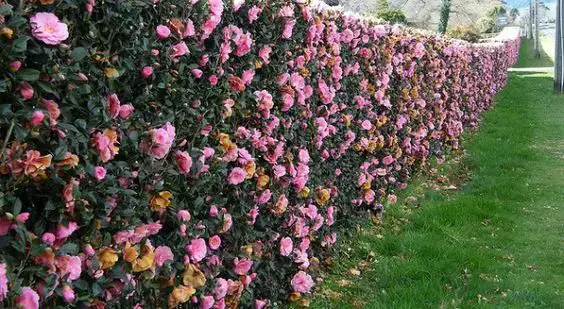
Camilla is a remarkable hedge that boasts vibrant purple flowers amidst its lush green foliage. This versatile plant thrives in dryer USDA zones, specifically ranging from 7 to 10. Its rapid growth rate makes it an ideal choice for creating taller edges or defining boundaries. One of the Camilla’s notable characteristics is its relatively low maintenance pruning requirements. While occasional trimming of the sides is still necessary to maintain its shape and appearance, it does not demand as much upkeep as many other hedge options.
Viburnum
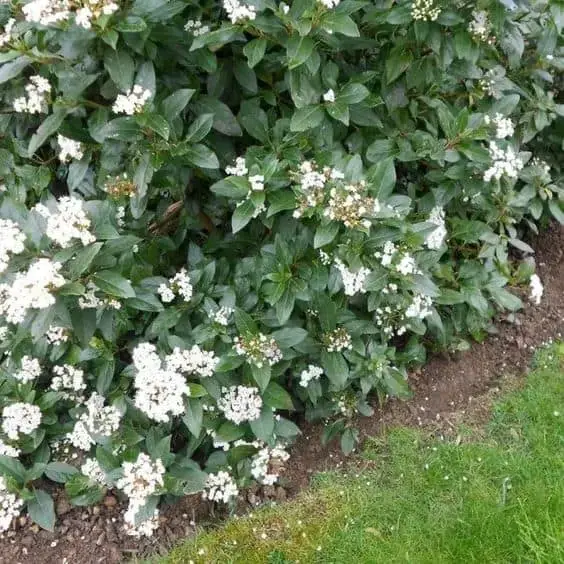
Viburnum, a genus comprising several species, offers a range of stunning hedges that thrive in cooler climates. Its hardiness is rated for USDA zones 2 to 7, with different species exhibiting varying levels of adaptability. While its foliage presents a mix of white and pink hues, the plant can reach impressive heights of up to 10 feet. Furthermore, it excels in moist soil conditions, making it an attractive choice for gardeners seeking low-maintenance options.
Summersweet
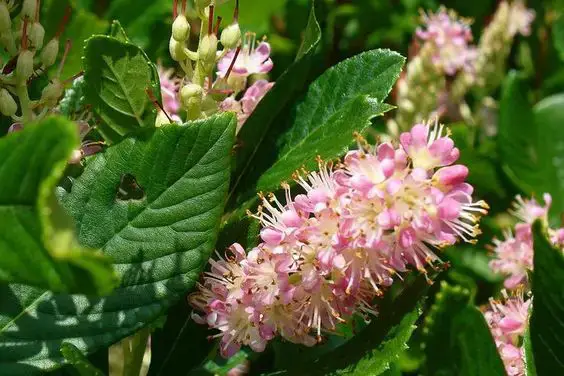
Summer Sweet, a versatile option for gardens in cooler and warmer climates, boasts vibrant purple and white flowers that emit a sweet fragrance irresistible to hummingbirds and bees. Its affinity for moist soils makes it an ideal choice for regions with such conditions. As the plant matures, it can grow up to eight feet tall, making it a striking addition to any garden.
Bluebeard
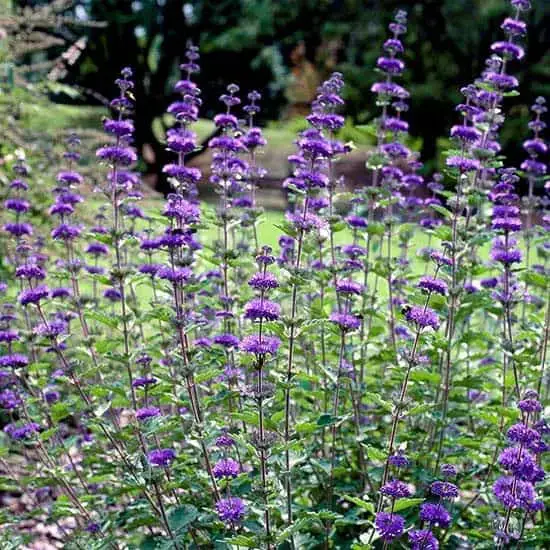
Bluebeard’s striking blue blooms make it an ideal choice for creating a visually appealing hedge. Despite their beauty, Bluebeards are surprisingly resilient plants that thrive in arid environments and boast a USDA hardiness rating of 5 to 9. One of the plant’s most notable features is its compact growth habit, reaching only four feet in height, making it perfect for shorter hedges or borders.
Hydrangea
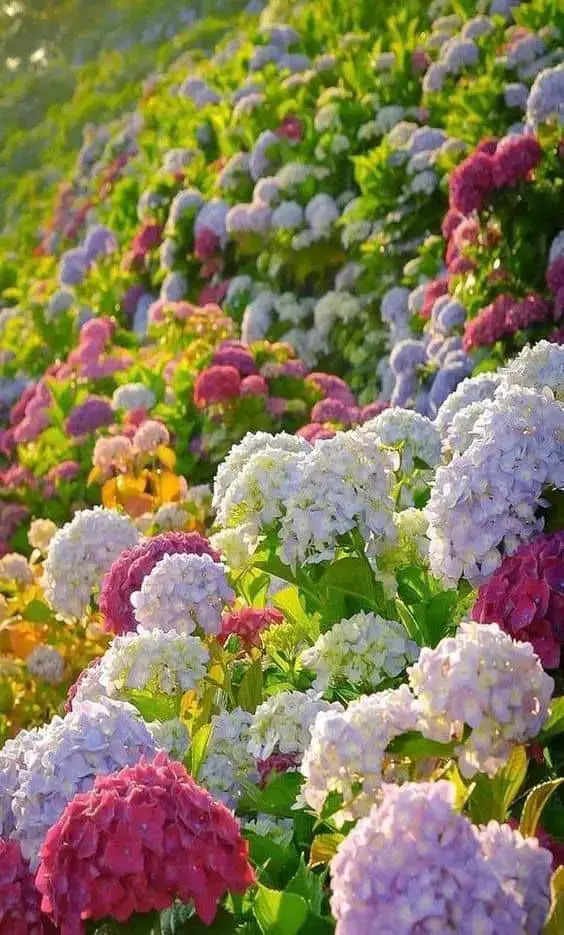
Among hedge plants, hydrangeas produce some of the largest and most striking flowers, often featuring stunning shades of blue and violet that can elevate any décor. While they thrive in USDA zones 3 to 8, it’s essential to note that these plants require more attention than many others, including regular watering to keep them looking their best.
Mexican Orange
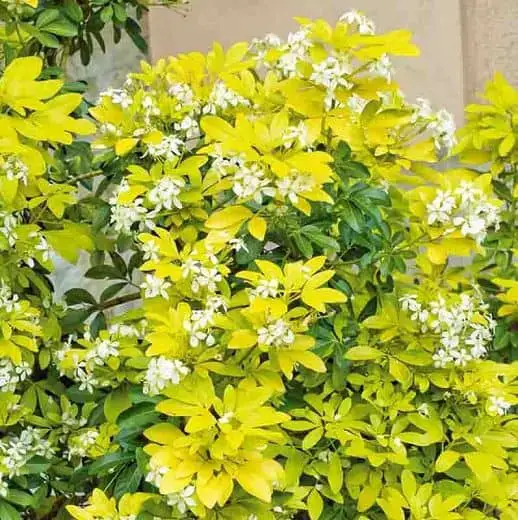
The Mexican Orange thrives in arid environments, boasting a USDA hardiness rating of 7 to 9. Its showy white blooms appear throughout the spring and summer seasons, drawing in insects and hummingbirds seeking the sweet nectar within. This low-maintenance plant demonstrates exceptional resilience to varying weather conditions, making it an excellent choice for those seeking a carefree addition to their garden.
Boxwood
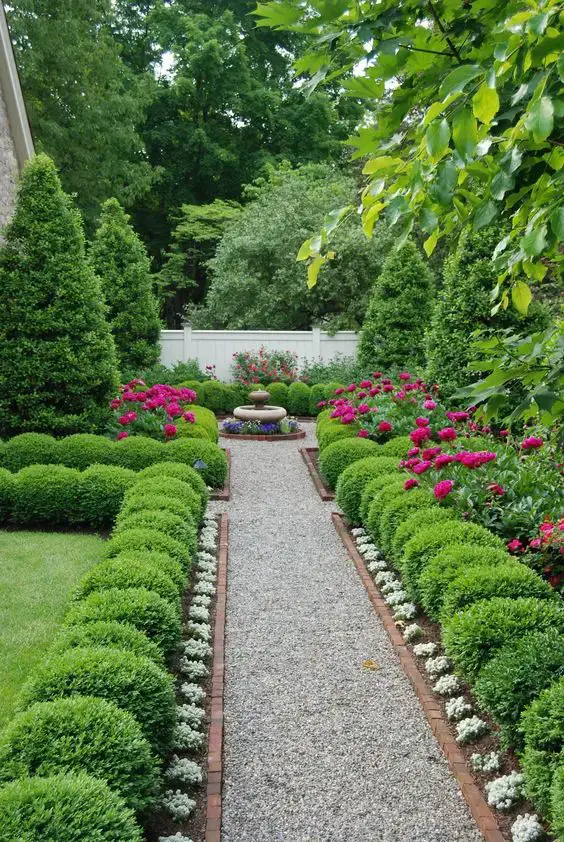
Many garden enthusiasts prefer boxwood due to its versatility in being easily trimmed into distinct shapes. Its hardiness is also a significant factor, thriving in USDA zones 6 through 8. However, it’s essential to provide proper care, especially during the summer months. To maintain the leaves’ vibrancy, growers should ensure the plants receive partial shade, as direct sunlight can cause them to lose their luster.
Glossy Abelia
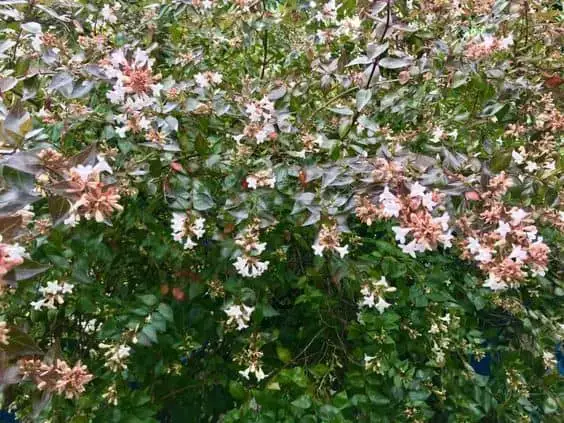
Glossy Abelia, a woody perennial with striking white and red foliage, boasts an impressive ability to flourish in arid environments. Its hardiness is reflected in its USDA rating of 6-9, indicating its capacity to thrive in various soil conditions. Notably, the plant exhibits resilience by performing well on sandy gradient soils, showcasing its adaptability to diverse terroirs.
Redclaws
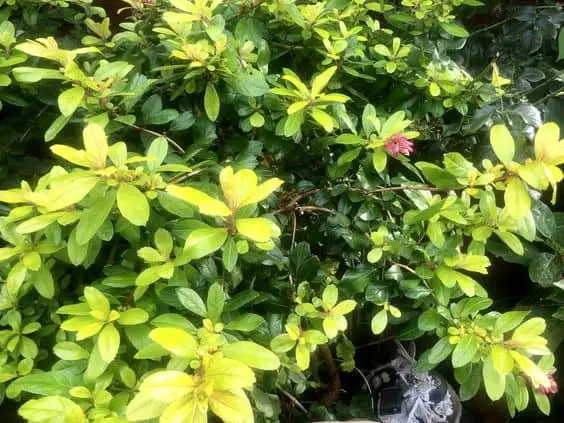
Redclaws, a resilient shrub, thrives in arid environments, excelling in USDA zones 8 and 9. Its impressive heat tolerance means it won’t be fazed by scorching temperatures, while its diminutive red flowers burst forth in autumnal splendor. With minimal upkeep required, this low-maintenance plant is well-suited for dryer soils, making it an ideal choice for those seeking a carefree addition to their garden or landscape.
St. John’s Wort
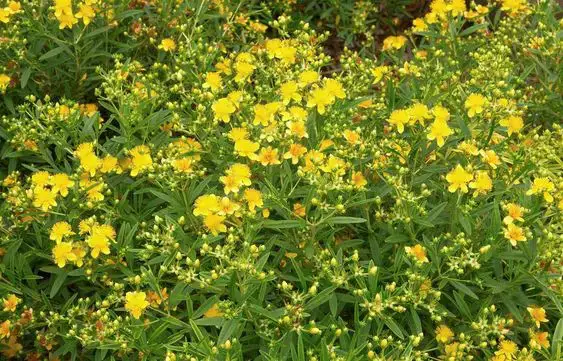
St. John’s Wort, a vibrant and lush green plant, is renowned for its bright yellow flowers. Its compact nature makes it an ideal choice for those seeking a low-maintenance shrub. With the ability to thrive in USDA regions 4-8, this versatile plant can add a pop of color to any garden. To maintain its shape and encourage healthy growth, regular trimming is essential, as St. John’s Wort has a tendency to grow rapidly. When pruned properly, it can be used to create a stunning hedge that adds depth and visual interest to any outdoor space.
Deutzia
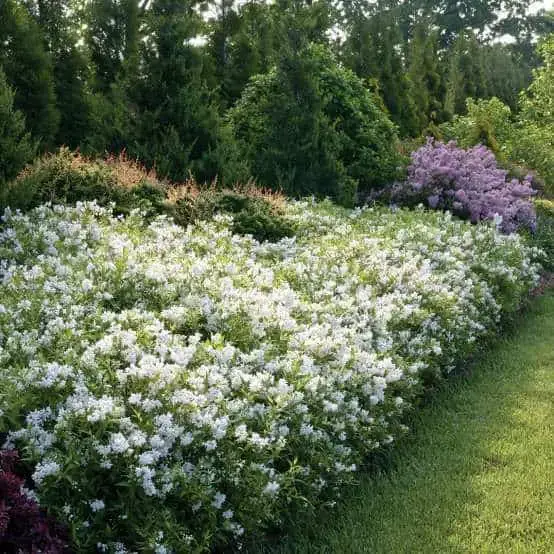
As the seasons change and spring arrives, Deutzia plants suddenly burst forth with vibrant purple blooms. The sweet fragrance emitted by these flowers has a remarkable effect on hummingbirds, drawing them in with irresistible charm. Additionally, this plant is a natural deterrent for unwanted insects, making it an excellent choice for maintaining tall hedges that reach up to ten feet in height.
Beauty bush
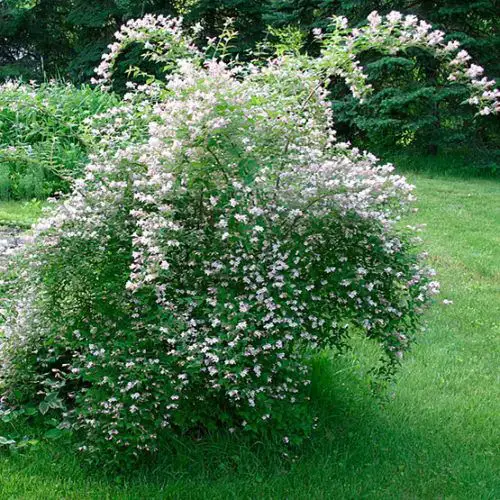
With its striking pink and white blooms, beauty bush is a standout choice for anyone looking to add a pop of color to their garden or landscape. But what really sets this hedge option apart is its ability to adapt to changing seasons – as the flowers mature, they gradually shift from vibrant hues to warm golden tones, creating a breathtaking display that’s sure to turn heads. And at heights of up to ten feet, beauty bush is an impressive specimen that’s sure to make a statement. Plus, its heat-resistant properties mean it can thrive even in the hottest summer months, making it a great option for those looking for a low-maintenance yet high-reward addition to their outdoor space.
Dwarf Fothergilla
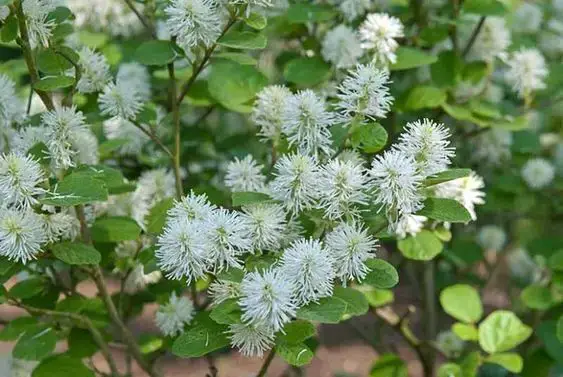
For a compact yet stunning addition to your garden, consider the Dwarf Fothergilla. This low-growing shrub typically reaches a maximum height of just a few feet, making it an excellent choice for those seeking a hedge that won’t overwhelm their outdoor space. As the seasons transition into spring, this plant bursts forth with delicate white blooms that are sure to brighten up your yard. Furthermore, Fothergilla tends to thrive in acidic soils and is hardy enough to withstand temperatures as low as those found in USDA zones five through eight.
Weigela
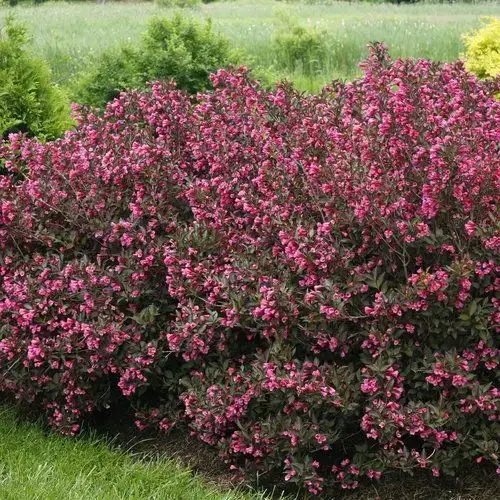
Weigela’s ornate foliage is a stunning feature of this plant, with its variegated leaves displaying a beautiful mix of colors. As the seasons bloom, Weigela produces vibrant purple and white flowers that are a magnet for hummingbirds, particularly during the spring when these birds are actively seeking out nectar-rich blooms.
One of the most striking aspects of Weigela is its ability to thrive in tall hedges, which can reach impressive heights of up to 12 feet. This plant also has a relatively broad range of hardiness zones, tolerating conditions found in USDA’s four to eight designated areas. To flourish, Weigela requires well-drained soil that allows for healthy root growth and water uptake.
Purple Beautyberry
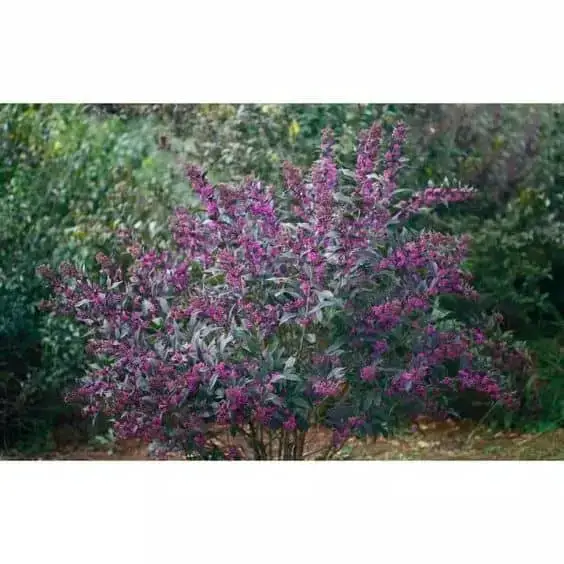
The purple beautyberry’s floral display is a striking feature of its springtime growth. This ephemeral plant bursts forth with numerous small clusters of flowers, only to succumb to the cold winter months. As a seasonal plant, it has a well-defined life cycle, emerging in the spring and then going dormant during the winter.Beautyberries thrive in areas with lower humidity and moisture levels, as indicated by their USDA zone 10 rating. Reaching heights of up to six feet, this versatile shrub is well-suited for creating a lush, medium-sized hedge.
Beach Rose
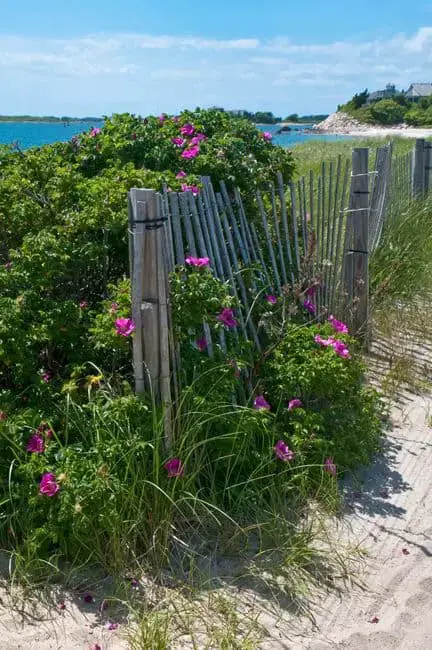
With its striking purple-tinged blooms, the beach rose hedge plant is a standout in any garden. Not only do these flowers entice bees and other beneficial insects to the area during springtime, but they also fill the air with their sweet fragrance. As for its hardiness, the beach rose thrives in USDA zones two through eight, making it an excellent choice for those looking to create a short hedge or border. This low-growing plant is particularly well-suited for this purpose, as it rarely exceeds three feet in height.
Dwarf Crape Myrtle
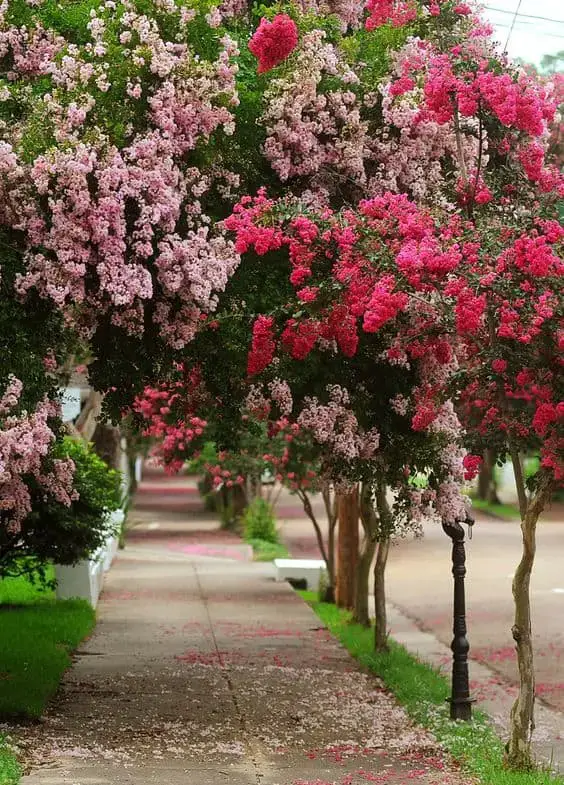
Dwarf Crape Myrtle is a versatile shrub that boasts stunning purple blooms. Its unique characteristics allow it to thrive in arid environments, making it an ideal choice for USDA zones 6 through 10. Despite its modest stature, topping out at just six feet tall, this compact plant excels as a medium-sized hedge. A seasonal delight, Dwarf Crape Myrtle’s foliage drops off with the winter season, only to return anew come spring.
Juneberry
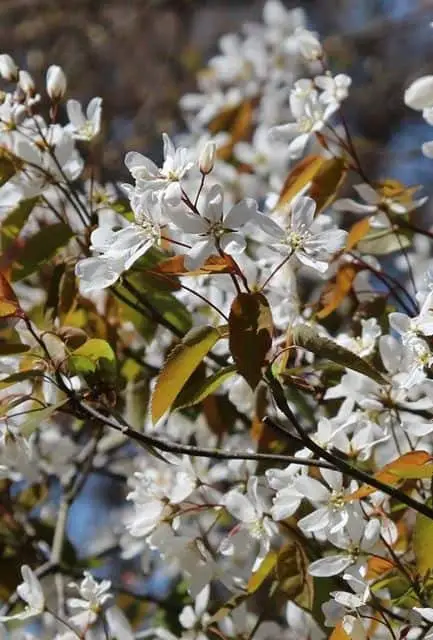
Juneberry’s remarkable trait is its leaves’ propensity to transform color in response to seasonal changes. This distinctive characteristic is complemented by the plant’s green blooms that emerge in the spring, only to be replaced by vibrant red flowers come autumn. The Juneberry also boasts tiny white clusters of flowers that grow amidst dry climates and thrive in USDA zones seven through ten.
Sweet Mock Orange
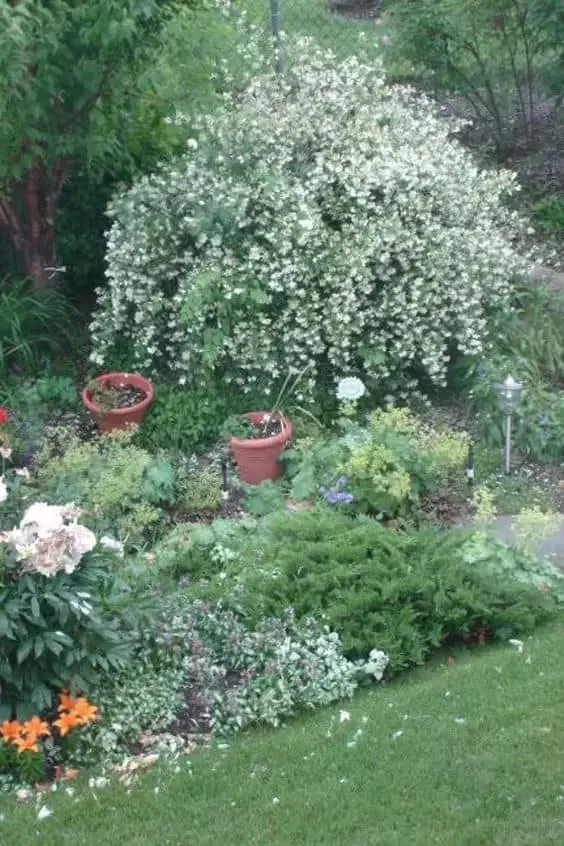
The sweet mock orange plant, a herbaceous shrub, boasts tiny white blooms and an irresistible sweet fragrance that draws in certain insects. Its rapid growth habit necessitates regular pruning to maintain its desired shape. This versatile plant thrives in USDA zones 4 through 8, making it an attractive addition to many gardens.
Golden False Cyprus
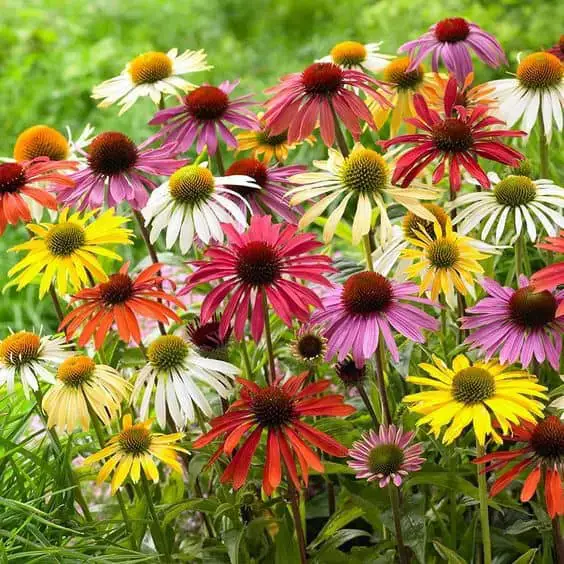
The Golden Mop Cyprus plant is renowned for its stunning white blooms, which can be quite impressive. However, this plant requires regular pruning to maintain its shape and size, as it has a tendency to grow quickly. As such, it’s an excellent choice for creating taller hedges. With USDA zones ranging from four to eight, the Golden Mop Cyprus is adaptable to various environments. Furthermore, it exhibits a range of subspecies, offering gardeners with diverse options for incorporating this beautiful plant into their landscaping.
Mountain Laurel
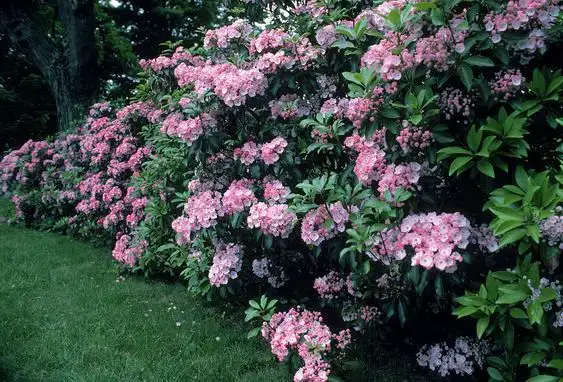
For gardeners seeking a hedge that flaunts colorful blooms throughout the year, the Mountain Laurel is an excellent choice. Characterized by its dense foliage of lush green leaves, this versatile shrub can thrive in a wide range of climates and is particularly well-suited for hot environments. Its adaptability allows it to flourish in USDA zones four through nine, making it a popular option for many gardeners.
Bridal wreath Spirea
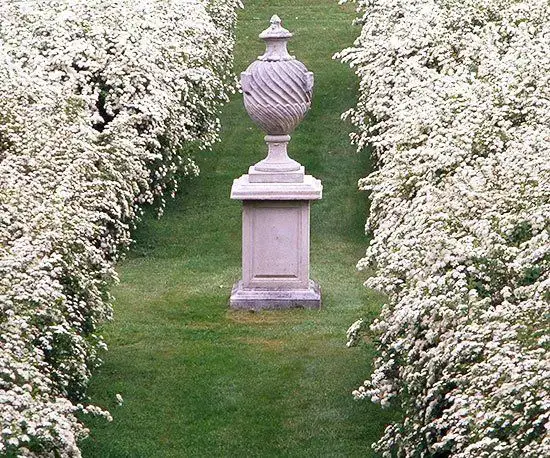
The Bridalwreath Spirea is a rapid-growing hedge that boasts a stunning display of white blooms. This versatile shrub can reach up to eight feet in height, making it an excellent choice for those seeking a taller hedge. One of its most alluring features is the sweet fragrance emitted by its flowers, particularly during the spring season. The plant’s refined appearance makes it a popular selection among gardeners and landscapers. However, it does require regular maintenance through trimming and pruning to maintain its shape and promote healthy growth.
Ninebark
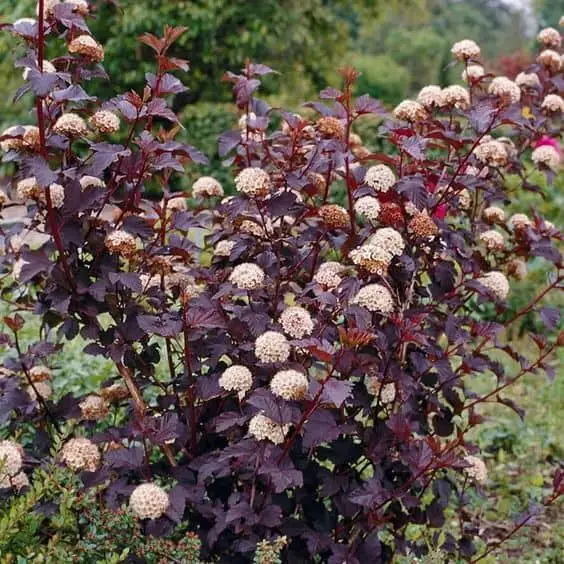
Ninebark’s versatility lies in its ability to transform its leaf color with the seasons, creating a dynamic display of green, gold, and even crimson hues. Additionally, the shrub produces small white flowers that bloom in clusters at the tips of its branches, adding visual interest. With its hardiness allowing it to flourish across USDA zones 8 and beyond, ninebark is an excellent choice for establishing medium to tall hedges that require minimal maintenance.
Spirea
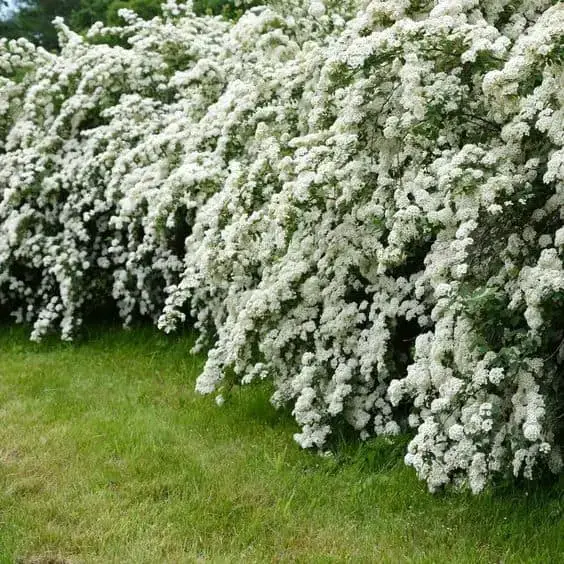
Spirea is a popular selection among gardeners and homeowners seeking to create a natural-looking hedge. Its impressive height allows it to form a sturdy barrier, while its white flowers add a touch of elegance. A major draw for many is the plant’s rapid growth rate, which enables it to provide effective privacy screening in a relatively short period. Furthermore, Spirea’s adaptability to various climate conditions makes it an excellent choice for gardens with diverse environmental factors.
Korean Lilac
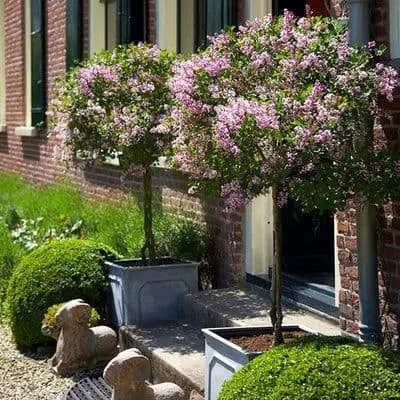
Korean Lilac, a herbaceous perennial, boasts vibrant purple blooms and a sweet, fragrant aroma that can fill your garden with its charm. To promote healthy growth and encourage lateral dominance, prune the stems immediately after they’ve finished flowering. This adaptable plant thrives in well-drained soil and can reach heights of up to eight feet, making it an excellent addition to any landscape.
Flowering Quince
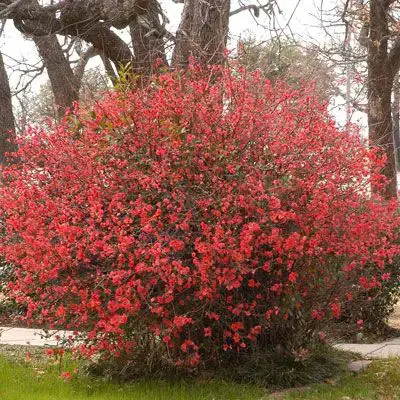
Flowering quince, a robust woody plant, excels as a natural hedge option. Its vibrant blooms display a stunning array of red and pink hues. As a bonus, this hardy shrub has the added advantage of being drought-resistant, making it an excellent choice for arid climates. However, to maintain its shape and prevent overgrowth, regular pruning is essential.
Azaleas
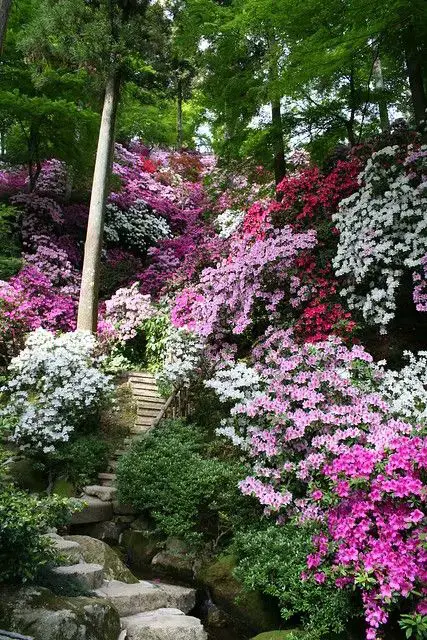
For those residing in arid regions, the Azalea plant is an excellent choice. This resilient species excels in USDA hardiness zones 7-9, where it can grow up to three feet tall and form a natural barrier for short hedges. A notable feature of the Azalea is its fragrant-free, rich purple blooms that add a pop of color to any landscape.
Oleander
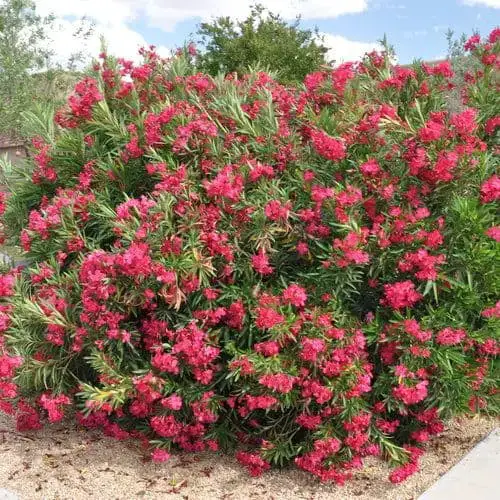
The Oleander plant boasts an impressive level of drought tolerance, making it an excellent choice for those seeking low-maintenance hedge options. Its hardiness is matched only by its ability to thrive in a wide range of climates, with USDA zone ratings spanning nine and ten. This resilient plant’s crowning glory is its vibrant pink flowers, which add a pop of color to any landscape. While it does require occasional pruning to maintain its shape, Oleander is otherwise remarkably easy to care for.
Chaste Tree
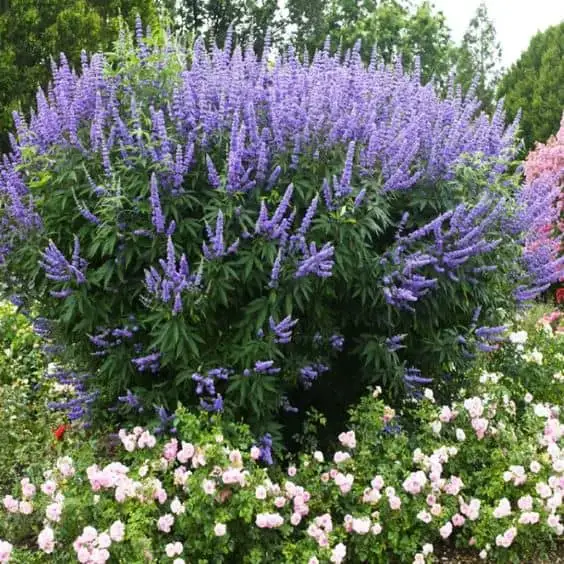
The Chaste tree, an herbaceous perennial, boasts striking purple and white foliage. Its life cycle involves dying off during the winter only to emerge anew in the spring. This hardy plant is capable of thriving in USDA’s nine zones, reaching a maximum height of ten feet. Its success relies on well-drained soils, making it an ideal candidate for regions with suitable conditions.
Hardy Hibiscus
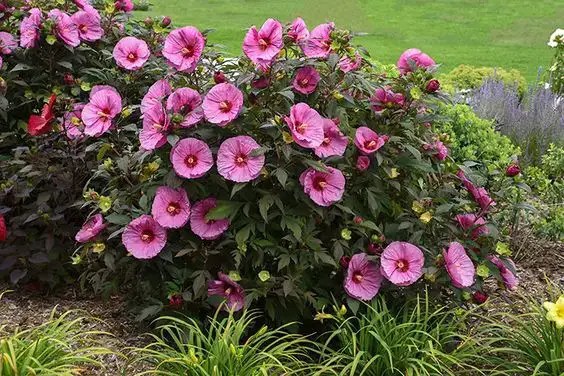
With its impressive, flat blooms and robust nature, Hardy Hibiscus stands out as an adaptable and resilient plant species. Its incredible ability to thrive in a wide range of climates, earning it a USDA hardiness rating of 5-9, makes it an attractive option for gardeners. When fully grown, these plants can reach heights of up to seven feet, making them ideal for creating tall, lush hedges or adding a dramatic touch to larger landscapes.
Privet
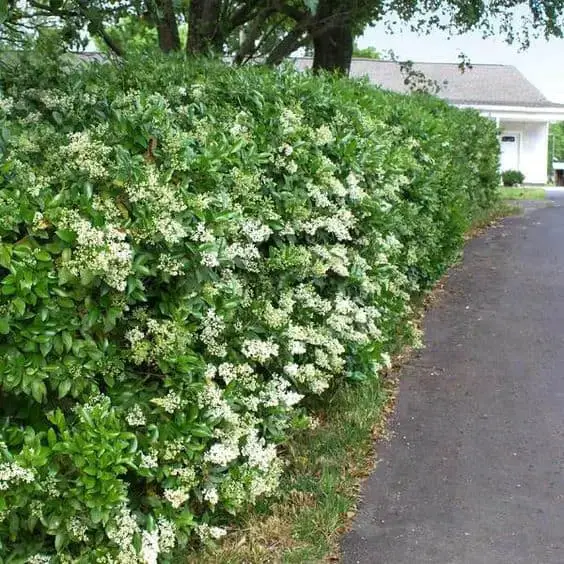
Privet’s natural habitat is characterized by its ability to thrive in thick, lush clusters. Characterized by the production of tiny white flowers, this plant species excels without the need for specialized soil conditions. One of the most notable features of Privet is its low-maintenance nature, requiring little to no upkeep to continue flourishing. Interestingly, these plants are highly resistant to drought and can thrive in USDA Zone 11, making them an ideal choice for those looking to add some resilience to their garden.
Shrub Rose
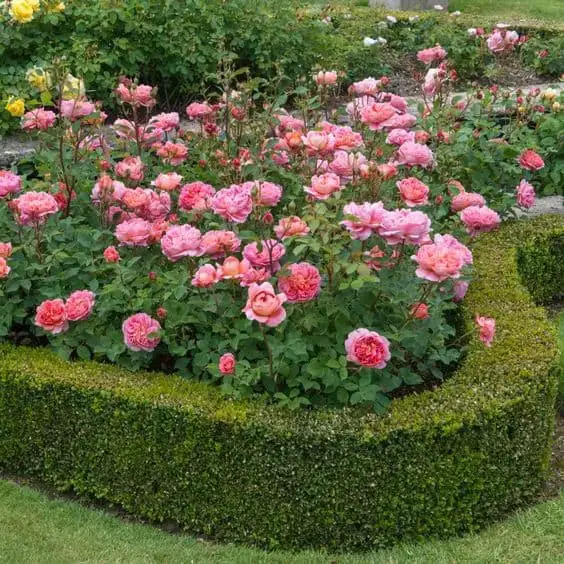
With an array of subspecies suited for hedging purposes, shrub rose varieties exhibit remarkable adaptability to diverse environments. Notably, most species tend to grow up to 10 feet in height, with a few exceptions. One of the most captivating aspects of these roses is their intoxicating fragrance, particularly prominent during the spring season. Interestingly, red roses within this group display a range of sizes, adding to their unique charm.
Potentilla
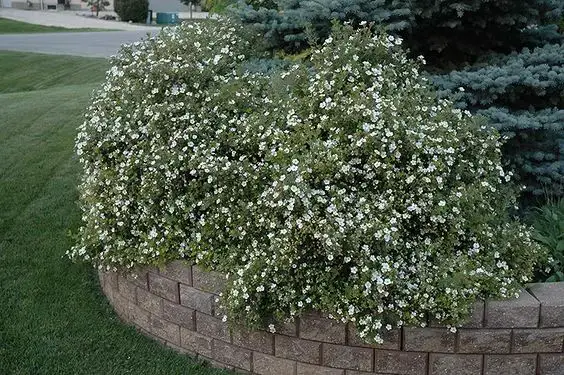
Pontella’s stunning display of bright yellow blooms can be enjoyed during the spring and autumn seasons. With a thriving range spanning USDA hardiness zones 3 to 7, this lovely plant is well-suited for gardens across these regions. Measuring no taller than three feet, Pontella makes an excellent choice for creating compact hedges or adding a pop of color to smaller spaces. Its drought-resistant nature also means it can thrive with minimal watering, making it a low-maintenance option for busy gardeners.
Lantana
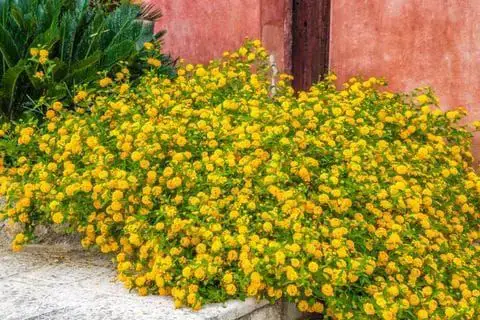
Lantana’s vibrant blooms are arguably the most striking feature of its hedge-like growth habit, comprising tiny, multicolored flowers that cluster together in a visually stunning display. This unique characteristic is made possible by the plant’s ability to remain dormant during winter months, allowing it to survive and emerge anew in the spring. However, lantana plants do require meticulous care to thrive, as their delicate nature demands precise attention to flourish.
Conclusion
Flowering hedges can elevate any landscape with their vibrant blooms and affordable charm. With a plethora of options available, it’s essential to consider factors like soil type, climate, and USDA zones when selecting the perfect plants for your hedge. In this article, we’ll delve into some of the most outstanding flowering hedge varieties that can bring beauty and life to your outdoor space.


